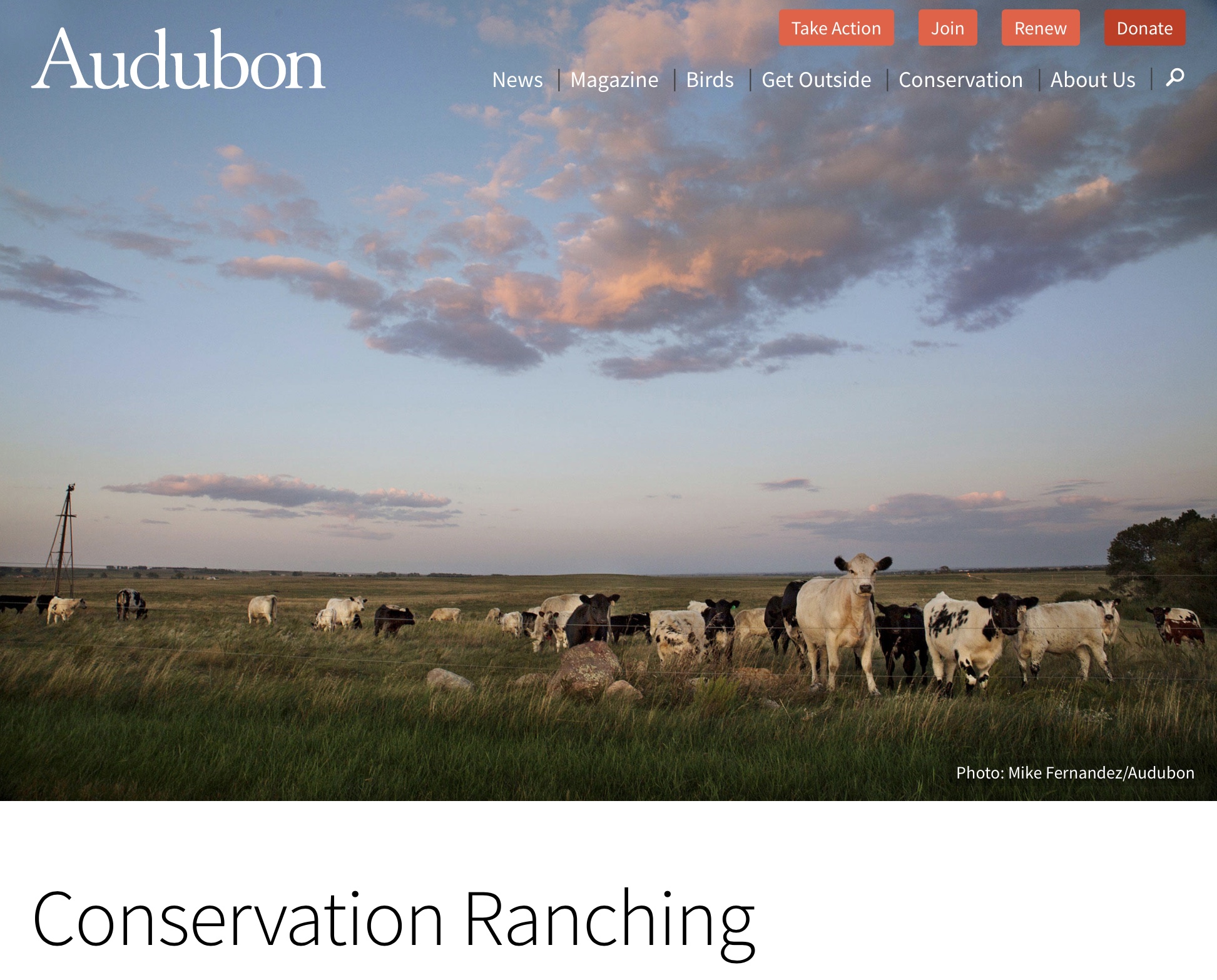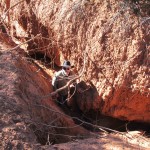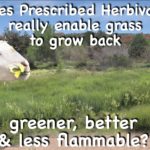

A number of times on rightwaytobegreen.com I’ve asked, ”Where’s a real environmentalist when you need one?”
That’s a weird question, you might be thinking. Aren’t all environmentalists “real?” What could make them “unreal?”
In every case, the reason I’ve asked this question is to provide an opportunity to compare the results of efforts to solve ecological problems achieved by the two very different main players in these issues on America’s extensive rangelands and open country. One side of this ”main player” divide is made up of people and organizations who call themselves ”environmentalist” and identify the solution to most, if not all, environmental problems in terms of a prescription — protection, preservation, regulation, conservation, etc. Invariably, that prescription is created, applied, and enforced by government agencies in response to environmentalist’s political pressure.
To people of this mind-set, the health of an environment or ecosystem is without exception measured in terms of the degree to which said prescription is applied, i.e., the more an ecosystem is protected, preserved, or regulated, the healthier it is.
In comparison and contrast to this, the other side of this “main player” divide is made up of people who identify environmental/ecological health in terms of condition rather than prescription (healthy, green and growing; appropriate plant and animal diversity; plentiful wildlife, little to no erosion; carbon sequestration, etc,). People who relate to the environment in this way measure their success by monitoring the extent to which their involvement or management achieves results that actualize these conditionss.
Here’s a link to an earlier rightwaytobegreen post that illustrates this divide. Interestingly, when this post was first posted in 2016 it was given a name appropriate to, and anticipatory of, this discussion. To make the gallery of photos it includes even more appropriate, I’ve added an image that connects it directly to the discussion here. (I figured I’d better add a bird picture for Audubon.) Here’s the link: Where’s a Real Environmentalist When You Need One.
After you’ve shared that post, you’ll be able to imagine my pleasant surprise when one day, while working on an article for Range Magazine, I ran onto a post on the website of the major environmental group, Audubon, entitled: How Cattle Ranchers Are Helping to Save Western Grasslands and Birds followed by the subtitle, ”The prairie is poised to make a comeback, thanks to Audubon’s new Conservation Ranching Initiative.”
Adding to the pleasant-ness of this discovery, as I read Audubon’s description of its Conservation Ranching Initiative, I encountered a number of statements that have also been included in descriptions (by me and others) of what has come to be called regenerative, holistic, or restorative ranching and have been featured in most, if not all, posts on this website.
One of those Audubon observations was: “The cows themselves are one of the best tools for renewing grasslands.” That quote made me think, Audubon must be aware of one of the most effective grassland renewers who has ever existed. (Who unfortunately passed away recently.) Fortunately, I have a post that shows how that man’s success confirms Audubon’s statement — that cows are one of the best tools for renewing grasslands . Here’s the link: In Honor Of One Of Nature’s Most Effective Restorers (Be sure and click the upper right-hand corner of any photo to go full screen and see how cows have achieved the impossible.)
Another statement included in Audubon’s description of its Conservation Ranching Initiative that I’ve encountered in a number of other descriptions of regenerative, holistic, or restorative ranching is: “Rotating where they (cows) graze mimics the behavior of bygone bison herds.”
Interestingly, the originator of the method of regenerative ranching/grazing that serves as a model for the version most frequently applied today, Allan Savory, once served as a wildlife manager in the African nation that is now Zimbabwe. That’s where Mr. Savory noticed the synergistic role herds of elephants, wildebeest and other herd animals played in the health of the extensive savannas they inhabited. Later, when Savory moved to the U. S., his Zimbabwe awakening enabled him to interpret America’s “bygone bison herds” and the great plains of which they once were sustainers in a similar light. Based on that, the idea of using cows to restore the regenerative bison/grassland synergy by mimicking the bison’s role in that interaction came, well, naturally.
After noting that “Grassland birds have suffered an unparalleled decline over the past half century because of the deterioration of grasslands,” Audubon developed the Conservation Ranching Initiative as a market-based conservation approach which offers incentives for good grassland stewardship through a certification label on beef products. That label indicates that some of the money you pay for the meat goes to sustain bird habitat by using cows as “one of the best tools for renewing grasslands” in order to produce results of the type shown in the good photos in the links above, rather than results as shown in the bad photos.
According to Audubon, by means of this program, “For the first time, consumers can contribute to grassland conservation efforts (and benefit wildlife habitat) by selectively purchasing beef from Audubon-certified farms and ranches.” Actually, regenerative ranching has been around for a while, and ranchers who manage their cattle in this bison-mimicking way have been marketing their meat as environmentally beneficial for some time. However, Audubon’s Conservation Ranching Initiative stands out in that it is operated and verified by a major environmental group. As part of that operation and verification process Audubon’s program connects private landowners with local ecologists who guide them through sustainable grazing practices and other land-management practices that create vital habitats for birds.
Speaking for myself, I would be more confident if the program brought private landowners together with accomplished regenerative ranchers who had accomplished results like those shown in the links above. That way we, or at least I, could be more confident that Audubon’s Conservation Ranching program would have a greater chance of success achieving its very worthwhile goal — to restore the ecological health of what remains of the Wild, Wild West. The challenge now — to help Audubon make that happen.






I was not aware that Audubon was on board, this is just great, we need to support them in anyway possible. I hope your chat with them next week will be productive. I did like to know if they have any active conversation going with the Savory Institute or Holistic Management international.
I agree that ranchers should get together a few times a year, having support is vital for this change to happen.